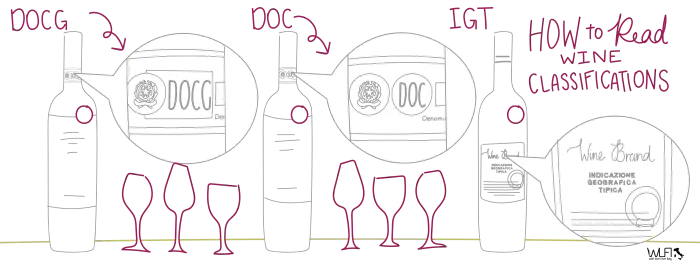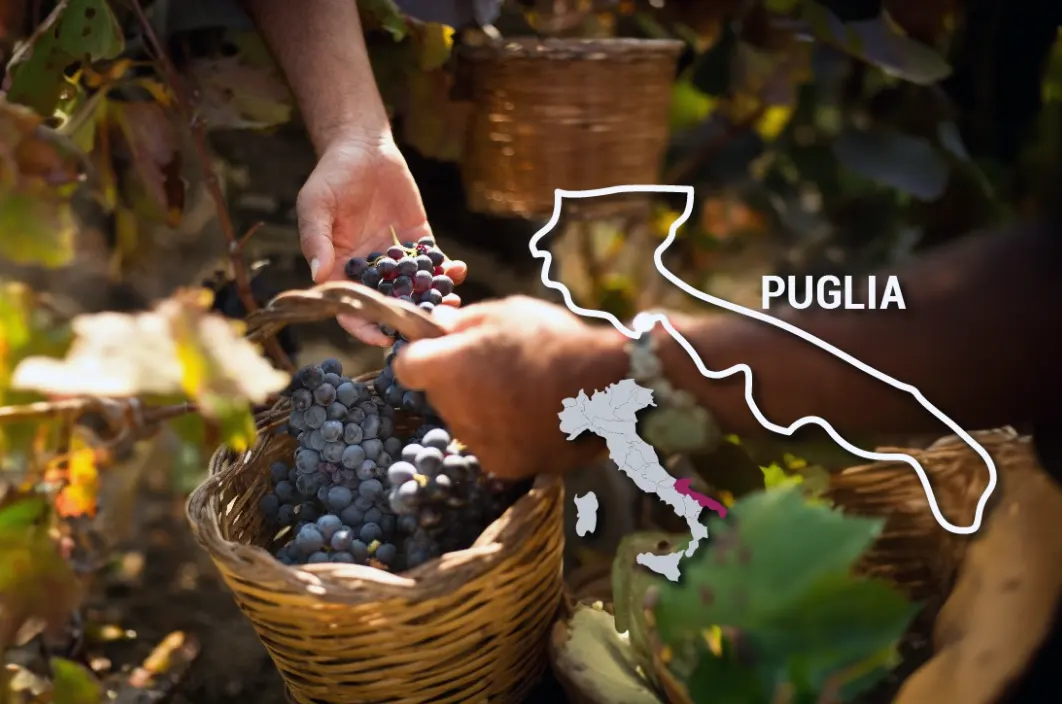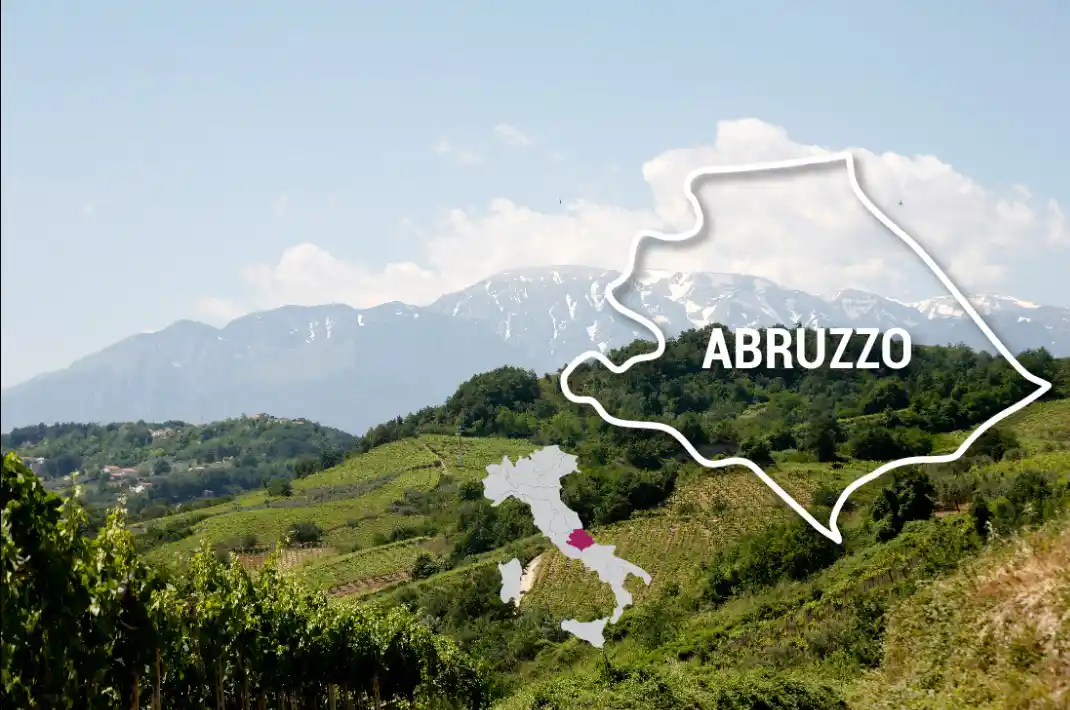Italian Wine, the wines that are the most produced worldwide. It is understandable that not only in Malaysia, but globally the Italian Wine classification system could be a challenge to decipher and understand. Italy boasts a rich history and tapestry of great Italian Wine, each boasting unique character, reflecting the diverse vineyards, grape variety and methods across the entire country from every region. Unlike wines from other countries, where the grape varietal are limited and most of the wines are depicted by the grape varietal, deciphering a bottle of Italian Wine and its classification & labels can be a challenge.
In a previous article, we discussed about a simple yet vital 3S Rule to enjoy Italian Wines better, if you’ve not read that, click here to read now! In this article, we delve deeper into understanding the Italian Wine classification system, empowering you with the knowledge to confidently understand the seemingly endless abbreviations and unlock a knowledge into the world of exceptional Italian Wines.
Background of the Italian Wine Classification
According to Italy’s National Confederation of Voluntary Consortia for the Protection of the Designation of the Italian Wines (FederDOC), the Italian Wine classification has came a long way since it first began. History traces back to the 1930’s when a regulation was issued, which laid down the first indications for protection of the Italian Wine production.
Back then, the Ministry of Agriculture created its first qualitative classification of Italian Wines by defining 3 important levels, namely: Vini Speciali (Special Wines), Vini Superiori (Superior Wines) and Vini Fini (Fine Wines). However, it was a rather sketchy indication which had no repercussions onto the wine industry.

Modernization of the Italian Wine Classification
The radical change for the Italian Wine classification came in 1963. During that time, an enactment for the Protection of Wine Designations of Origin was enforced. It was the first measure towards governing the quality of wine productions and designation of its origins.
Aside from just classifying and categorizing the Italian Wines based on its location, the Presidential Decree also placed into very strict rules regarding the production numbers, the records on grape varieties, and the quantity of grapes productions among the many strict rules. In which to this day, it serves as the basis of the Italian Wine classification system.

The Italian Wine Classification System
Denominazione di Origine Controllata e Garantita (DOCG)
This classification represents the pinnacle of Italian wine classification, DOCG which in English translates to “controlled and guaranteed designation of origin.” These are the most prestigious Italian Wine classification, subject to the strictest regulations. There are 74 DOCGs in Italy, with the latest addition in 2011.
Everything from grape varieties, vineyard location, yield, to aging requirements are meticulously controlled. DOCG wines are known for their exceptional quality, distinct regional character, and higher price points. Wines that mostly fall within this classification includes Barolo from the Piedmont region, Brunello di Montalcino from Tuscany as well as the Amarone della Valpollicella from Veneto, these prestigious Italian Wines are mostly named on their respective bottles due to their great reputation, an assurance of quality.
Denominazione di Origine Controllata (DOC)
This classification translates to “controlled designation of origin,” DOC is a level below the DOCG mentioned above. It signifies a strict level of regulation, where grapes must originate from a specific, delimited zone within Italy, and specific grape varieties are often mandated. There are currently 334 DOCs in Italy, with the most recent approved addition in 2017.
Yields of grapes are also typically limited to ensure its quality production. DOC Italian Wines are known for their consistent quality and expression of the designated area where its from. Regional nuances are ensured, while DOC Italian Wines mostly mentions the region where the wine originates, such as DOC Friuli Colli Orientali, DOC Piemonte and DOC Venezia.
Indicazione Geografica Tipica (IGT)
This classification is a significant step up from Vino da Tavola (VdT) which are normal and standard quality table wines. IGT stands for “typical geographical indication.” Here, the grapes must come from a designated zone within Italy, offering a taste of the region’s specific terroir. There are currently 118 IGTs in Italy.
Some production methods, like grape varieties or grape yield limits and might or might not be regulated. Unlike DOCG and DOC Italian Wines, the IGT wines allows for winemakers to use craft styles that are traditionally not allowed in the DOCG and DOC regulations. IGT wines are known for their excellent value and showcase the unique character of their designated zone. Examples of IGT would include the IGT Verona, IGT Veneto and IGT Toscana among the many.
Super Tuscans
Coined in the early 1980s by wine enthusiasts, it is an unofficial term to describe high quality red wines from Tuscany. History records that the term originated as a result from the frustration winemakers had towards a slow bureaucracy in the changing Italian Wine Laws during that time.
Italian Wine producers began mixing other grape varieties like Merlot, Cabernet Sauvignon and Syrah, the non-indigenous grape varieties into their blends of wines to create high-quality wines. One of the great Italian Wineries that produces such Super Tuscan wines is IBalzini, one of Italy’s most prestigious wine producers from Tuscany.

Locating the Italian Wine Classification Label
So now you’ve understand the Italian Wine classifications, but how do you determine if the bottle is a DOCG, DOC or any other classifications. Locating the classification information on an Italian wine bottle is a pretty straightforward process, DOCG and DOC classifications will have a label on the bottle neck for easy identification, while IGT wines do not have a label to be placed on the bottle neck, Italian Wine producers will mostly print these classifications on either the main label on the bottle front, or the back label with the brand name and artwork.
Other Italian Wine Quality Classifications
Aside from the official Italian Wine classifications mentioned above, there are a few paramount terms that you might also see on a Italian Wine label, these terms are often used to describe and indicate the wine quality within the bottle.
Classico: This term denotes that the wine is from a zone within a region that is considered to be the original area of production historically, for example Chianti Classico.
Superiore: This term is usually denotes a higher quality designation of Italian Wine that commonly is produced with a slightly elevated alcohol level as well as higher quality grapes.
Riserva: This term is used to describe an Italian Wine that has been aged for a significantly longer than usual, though the aging time varies among the denominations.
The exploration in the universe of Italian Wine may seem daunting and complicating at first. However, by understanding the classification structure, you are sure to be able to make the best informed choice for your next bottle. The Italian wine classifications serve as a valuable knowledge, as it is able to ensure the quality and production of every bottle. Next time, look out for the classification of the Italian Wine that you uncork and embark on a delightful journey through the diverse landscape of Italian wines.
With Love From Italy prides ourselves for importing exceptional, high quality and unique Italian Wines. With over 300 different varieties of Italian Wines from all regions around Italy, from North to South, we are sure to be able transport you on a sensory experience and captivating adventure of Italian Wines like no other.
A great array of our specially curated With Love From Italy selection of Italian Wines are available at selected restaurants and premium retailers. Stay updated for more selections by subscribing to our Newsletter here!



